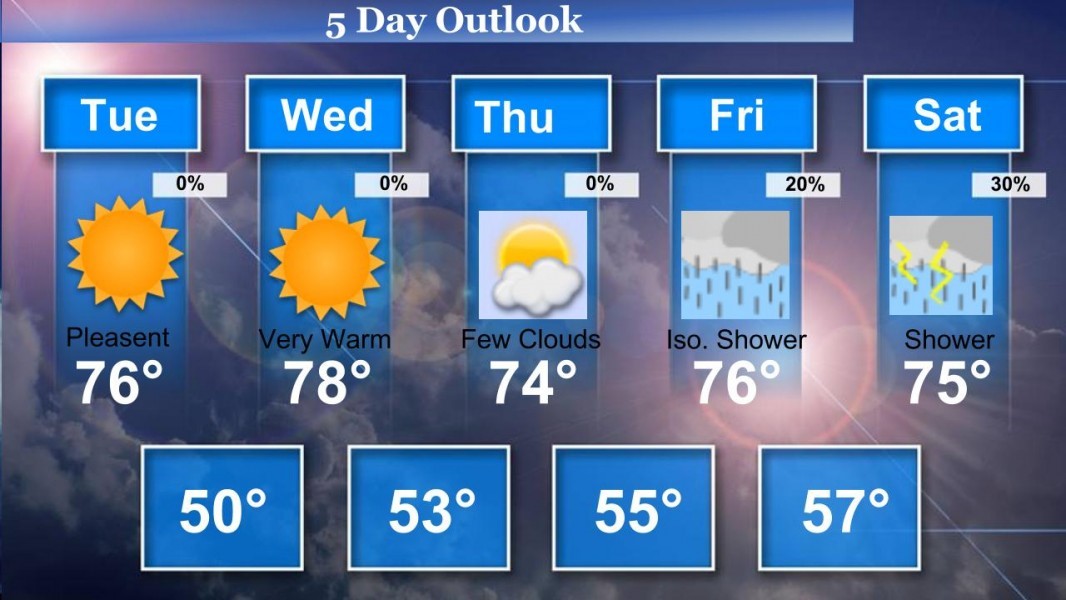Demand Planners readily recognize the challenge of creating business forecasts, and perhaps have an appreciation for the thankless job weather forecasters have. Several times each day they appear on our TV screens, with audiences of millions eagerly anticipating their pearls of wisdom. And when they’re wrong and our vacation plans are ruined by rain we think “heck, with a job title like meteorologist they should get it right”. Perhaps they do, if we apply fair analysis and measurement.
It’s easy to simply state that business and weather forecasts are similar because they’re both always wrong, but let’s be careful in how we define what is wrong. If the weather forecast states tomorrow’s high temperature will be 78 degrees, and it ends up at 79 degrees, is this really “wrong”? Would anyone have changed their daily plans, or travel or outdoor activities based on a single degree difference? Let’s relate that to a business forecast that predicts we’ll sell 10,000 units this month. If we sell 10,075 units, does this constitute being wrong?
Forecasts should measure their accuracy in terms of relevance as opposed to absolute value
Our forecasts, whether for business or weather, should measure their accuracy in terms of relevance as opposed to absolute value. Hence the use of forecast error measures such as MAPE, WAPE and WMAPE. We also appreciate forecasting a range versus a point estimate, thus in the above example we might predict a high of 76 – 80 degrees, rather than 78.
A major principle of business forecasting is that forecasts will incur more error as we project farther into the future. This is certainly true of weather forecasting as well. Many meteorologists will project a 5-day forecast, every morning during the week. Which day’s forecast, from Monday through Friday, will do the best job of predicting Friday’s actual temperature? It should be obvious that Friday’s is best, although some cynics will prefer Saturday (after the fact, telling us what the temperature was the day before). It becomes a fool’s errand to attempt to predict the temperature weeks, months or years into the future.

This may be countered by forecasting in more aggregate terms, as detailed forecasts have more error. For example, a projection of how many dollars of sales Ford Motor Company will have in North America for 2018 is more accurate than predicting how many F150 trucks, with crew cab, V8 and automatic transmission will sell between 3pm – 5pm on July 10th in Binghamton, NY. Similarly, a forecast for the average temperature in the U.S.A. for 2018 is more accurate than predicting the temperature in Binghamton for July 10th.
It is easy, and lazy, to avoid work and just assign all change to randomness in the market
Business forecasters recognize the only constant is change, which may result from random variability, trends and/or seasonality. Weather forecasts share all of these demand patterns as well. It is easy, and lazy, to avoid work and just assign all change to randomness in the market… those damn customers are schizophrenic! A preferred approach is to recognize there is a reason demand exists, just as there is a scientific reason why the temperature today is warmer than yesterday. The best forecasters understand their products and markets and know scientifically and intuitively what’s happening, how it’s happening and why it’s happening.
That said, there are still the one-off events, the outliers, what we may refer to as “extreme weather events” that are hard to predict and disruptive to our environments. Risk management will provide us with tools to predict, mitigate and recover from such events. Businesses would be well advised to have their own version of FEMA in place in this regard.
[Ed: For further discussion on forecast relevance vs. absolute absolute accuracy, check out Eric Wilson’s article titled Stop Saying Forecasting Are Always Wrong.
